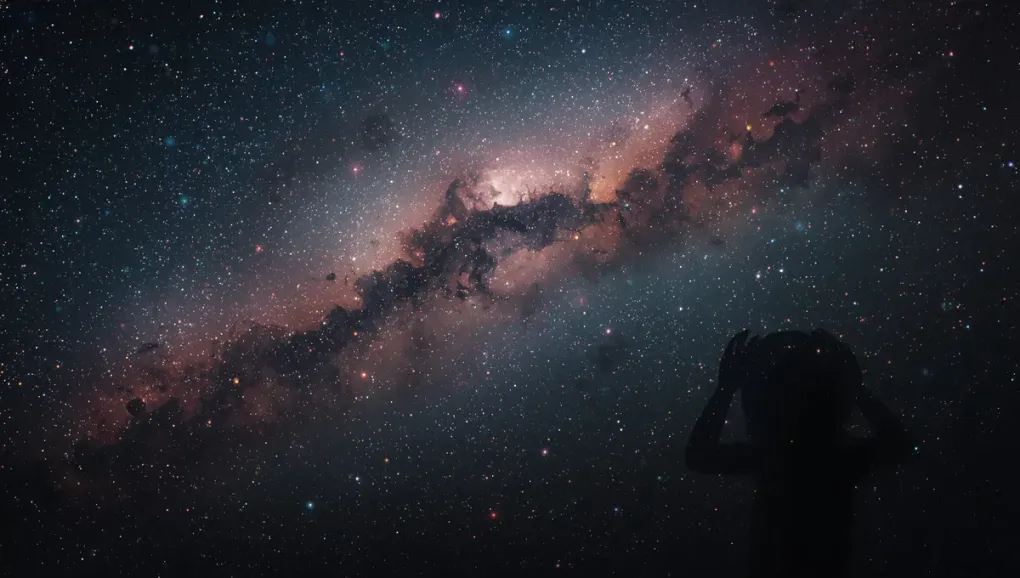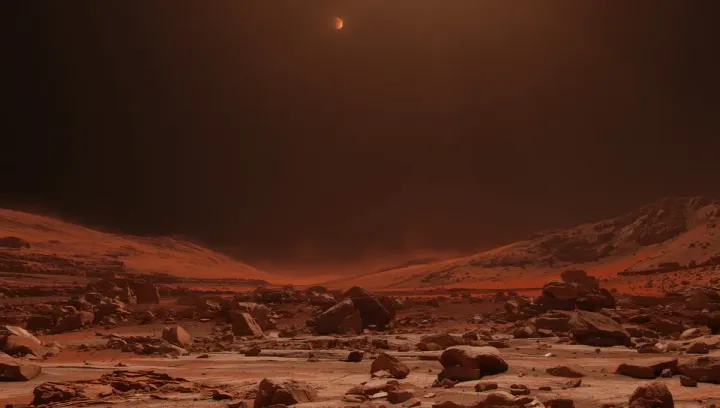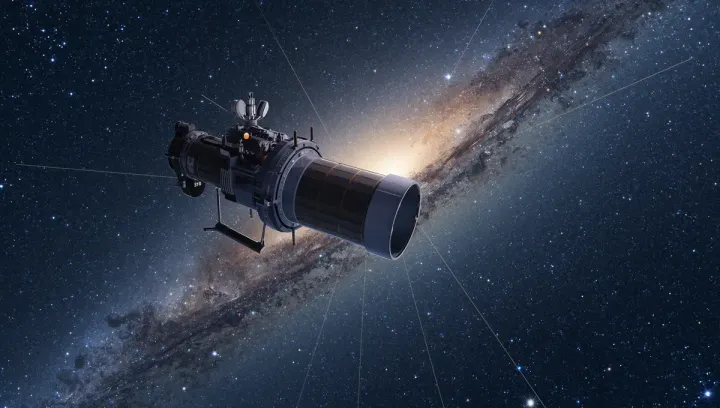
The Data Deluge from the Heavens: How AI is Saving Astronomy
For most of human history, astronomy has been a science defined by scarcity. Every photon of light from a distant star was precious, every observation hard-won. Astronomers would spend entire nights at a telescope hoping to capture just enough data to make a discovery. But that era is over. We have entered a new age of astronomy, one defined not by scarcity, but by an overwhelming, unimaginable abundance of data.
Leading this new era is the Vera C. Rubin Observatory in Chile. When it comes online, its Legacy Survey of Space and Time (LSST) will scan the entire visible southern sky every few nights. In doing so, it will generate around 20 terabytes of data every single night. To put that in perspective, that is more data in a single night than the Hubble Space Telescope has produced in its entire 30+ years of operation. This is the data deluge.
And it presents a profound problem. This isn’t just a storage challenge; it’s a discovery challenge. Hidden within that colossal stream of information will be millions of transient events—things that change, move, or explode. How do you find the one-in-a-billion signature of a new type of supernova? How do you spot the faint trail of a potentially hazardous asteroid on a collision course with Earth? It is literally impossible for human astronomers to look at every image. The haystack is cosmic, and we are searching for needles.
The Unsung Hero: Artificial Intelligence
As the floodgates of data open, a new and indispensable tool has emerged as the unsung hero of modern astronomy: Artificial Intelligence. AI, specifically machine learning and deep learning, is the only feasible way to sift through this data deluge and extract meaningful discoveries.
AI algorithms are being trained to become expert celestial classifiers, performing tasks at a scale and speed that humans cannot match:
-
Classification: An AI can be trained on millions of examples to instantly distinguish between a supernova, a variable star, a flaring quasar, or the glint of a moving asteroid. When the Rubin Observatory sends out millions of alerts for transient events each night, AI-powered “brokers” will classify and sort them in real-time, flagging the most interesting ones for human follow-up.
-
Anomaly Detection: Perhaps even more excitingly, AI can be trained to spot the unexpected. By learning what “normal” looks like in the vast dataset, it can flag anomalies that don’t fit any known patterns. These outliers could be the key to discovering entirely new and unforeseen astronomical phenomena.
-
Noise Filtering: AI is also brilliant at cleaning up messy data. It can help filter out noise from Earth’s atmosphere, remove the trails of satellites from images, and enhance the faint signals of distant galaxies, revealing details that would otherwise be lost.
Real-World Impact: From Planetary Defense to Cosmic Mysteries
This isn’t science fiction; AI is already making a huge impact in astronomy:
- Planetary Defense: AI systems are crucial for identifying potentially hazardous asteroids in the torrent of data from sky surveys, providing us with more time to react if one is found to be on a collision course.
- Supernova Discovery: Automating the discovery and classification of supernovae is vital for cosmology, as these explosions are used to measure the expansion of the universe (as seen in the Hubble Tension).
- Exoplanet Hunting: AI helps sift through the data from missions like TESS, finding the subtle, periodic dips in starlight that indicate the presence of a planet orbiting a distant star.
- Gravitational Lensing: AI is adept at finding rare gravitational lensing events—where the gravity of a massive object bends the light from a more distant one—which help us map the distribution of dark matter in the universe.
The Future: A Human-AI Collaboration
It’s important to understand that AI is not replacing astronomers. It is empowering them. By handling the monumental, repetitive task of sifting and classifying, AI is freeing up human scientists to do what they do best: focus on interpretation, ask creative questions, test hypotheses, and design new kinds of observations.
The future of astronomy is a symbiotic relationship. AI will find the interesting needles in the cosmic haystack, and humans will provide the insight and understanding to figure out what they mean.
Conclusion: A New Era of Discovery
Astronomy has fundamentally transformed. For centuries, we were limited by our ability to observe. Now, we are limited by our ability to analyze. The data deluge from the heavens is a challenge, but it is also an incredible opportunity. AI is the key that will unlock the secrets hidden within this vast, beautiful, and ever-changing cosmos. It is the silent partner in a new era of discovery, ensuring that the next great revelation won’t be missed in the flood.


